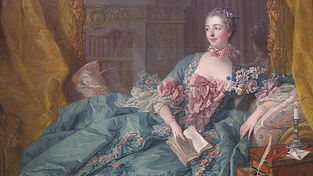Mistresses and Lovers for Dummies

One of the themes in my book that elicited attention was my “new monogamy” section, where I explore ethically non-monogamous marriages, and the gray zone of don’t ask, don’t tell non-monogamy.
What I heard most often when I brought up non-monogamy was, “it never works!” Or, a more tentatively hopeful version: “it never works…. does it?”
These occasional dispatches will be about rules, etiquette, and meditations for paramours, providing answers to the “how does it work?” question that we naturally wonder about, if we don’thappen to be in the 1% of the French aristocracy.
I’ll be having some hopefully thought-provoking fun with these occasional columns. Imagine them as a book of etiquette for mistresses in several installments.
Rule #1: A paramour should be a paramour, and not a replacement spouse or a new spouse.
The problem with mistresses is that they don’t have their own section in the Greeting Card aisle. I’m fairly serious about this. Sometimes, it’s hard even for me to tell how serious I am, until I get rolling.
You’ll find cards for all sorts of social roles in the greeting card section: grandparents, best friends, the ill, the husband, the wife, the child, the grandchild, the nephew and niece, the stepparent, the stepchild, the colleague, the newly-christened and Bat Mitzvahed, the new mother, the pregnant woman, the graduate, the widow, and the newly-divorced. There are cards to honor same-sex marriages, so the business is catching up to social norms.
When you have a greeting card designed for you, you’ve got a solid social role. You’re somebody.
With social roles come rules, and with rules come etiquette and boundaries–formalized expectations for behavior, and a unique, defined place in society.
You won’t see greeting cards that say, “To My Dear Back Door Man…”, or to “My Beloved Side Dish…,” because the Lover and Mistress don’t have socially-recognized, sanctioned roles.
In earlier times—say, the court of Louis XIV—mistresses and lovers did have a discrete and even honorable niche in social and political life. Eighteenth-century French society even distinguished precisely among the nobleman’s “favorite mistress” or “official mistress,” who enjoyed a certain social stature, and ancillary mistresses, in addition to the wife.
It’s an incidental pleasure of reading Stendhal’s OnLove that he opines casually on the difficulties of the nobleman who experiences pre-Viagra era performance anxiety —and, invariably, when he’s on a visit to his “favorite mistress,” no less!
We tend to think today that ethical non-monogamy’s a doomed, “It’ll Never Work” idea for stubborn reasons of biology or destiny or primal jealousy or divine retribution. But it may be a simpler problem of social roles, manners, and etiquette.
When a paramour has a separate, socially-defined role and legitimacy apart from the spouse, this protects the marriage somewhat, because it removes the paramour from competition with the spouse for the only socially-recognized intimacy in a monogamy-based society: the one and only, exclusive love partner (normatively, a spouse). Put simply, our intimate lives aren’t big enough for the both of them.
When I was researching my book, the new monogamists that I talked to—those who openly permitted other involvements, for both partners, and for whom this arrangement is working (or working at least as well as monogamous marriage)—believed, post-romantically, that people can have more than one intimate attachment at a time.
The non-monogamist saying I heard most often was, “love is not a pie.” Affections and intimacy are boundless, not a finite resource. It’s an important precondition. If you don’t believe that (and many don’t) then ethical non-monogamy would certainly be more difficult.
The standard of only one intimate attachment at a time forces competition between spouse and paramour, even when we might not be inclined to feel that way.
It forces all intimate attachments to be apples, when we might actually want some attachments to be oranges, not apples.
What follows too often is the erotic version of “mission creep:” Without a role or place to define them, the paramour is a social rogue. They can become an existential threat to the marriage, for that reason alone (to say nothing of the other reasons they might become a threat). They become the rival spouse, even though we may have no intention or desire to have them as a spouse. It’s just that Significant Other—not othersin the plural—is the social reference point for intimacy (“If I lust after this person so much,” we might easily assume a la the romantic code, “then I guess I’m in love. And then I guess I should want to marry them…”). “Replacement Spouse” isn’t the most desired role for the lover, but it’s the role standing right next to it.
Chemistry comes to the rescue with a good metaphor. Chemistry identifies dozens of different kinds of bonds that co-exist in the universe. We’ve got single bonds, and double bonds. We’ve got ionic bonds, covalent bonds and noncovalent bonds, all with their unique crystallizations, morphologies, and rules of attachment. One bond isn’t like another.
Double bonds are stronger. But single bonds are bonds, too, on their own terms.
It could be that way with paramours. They’re not nothing. Nor are they spouses. If you want them to be a spouse, then that’s another issue, and problem. Because ideally, a paramour is a unique social role. Even if it doesn’t have its own greeting card.





